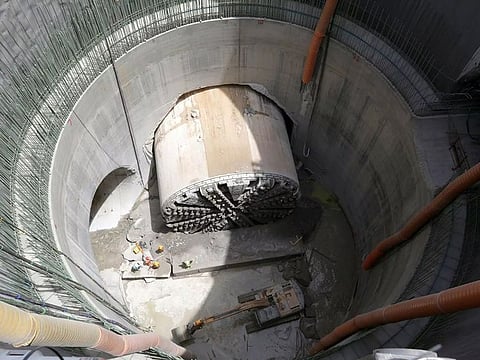Dubai increasing rainwater drainage capacity to reduce flood risk
Upgrades to existing systems ongoing while work also starts on new Dh30 billion project

Dubai: Major works are underway to boost Dubai’s rainwater drainage capacity and reduce flood risks in the future from extreme weather and climate-related challenges.
This proactive approach follows April’s unprecedented rainfall, when the city received a year’s worth of rain in a day, causing disruptions across the emirate.
In response, His Highness Sheikh Mohammed bin Rashid Al Maktoum, Vice President and Prime Minister of the UAE and Ruler of Dubai, approved the Dh30 billion ‘Tasreef’ project in June that aims to increase the city’s drainage capacity by 700 per cent.
A team has already begun work on the Tasreef project, which is set for completion by 2033. Meanwhile, improvements are being made to existing drainage systems to increase their capacity, said a senior official from Dubai Municipality.

A gravity-driven tunnel will ensure large volume of water flow without pumps, reducing operational and maintenance costs.
Unlike the 10.3km tunnel launched in 2019 to drain rainwater from Expo Dubai, Al Maktoum International Airport City and Jebel Ali, the Tasreef project will cover all areas of Dubai.
“Tasreef tunnel will connect all the drainage networks to pump stormwater to the sea,” Dr Al Hafez said on the sidelines of the recent International Geotechnical Innovation Conference.
He revealed that teams are working on a preliminary study to determine the tunnel’s optimal alignment.
“The internal study will determine the alignment, to connect Deira and Bur Dubai in an optimum way with this tunnel; to be more efficient, avoid any blocks, and ensure smooth water flow to the sea.”
Dr Al Hafez noted that the tunnel could be as deep as 40 to 60 metres and will be primarily constructed under major roads and highways. “It’s better and safer,” he said.
Managing risks until 2033
With Tasreef’s completion nearly a decade away, the municipality is implementing upgrades to handle future heavy rains by enlarging existing drainage networks.
“We have a lot of projects. We are renewing and expanding the network. Wherever the internal diameter is small, we are making it bigger. Work is underway in a lot of places in the city. So, more water can be diverted,” said Dr Al Hafez.
Sign up for the Daily Briefing
Get the latest news and updates straight to your inbox
